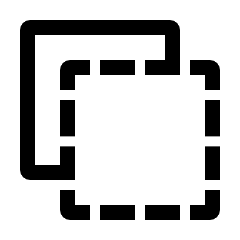A Non-Exponential Transmittance Model for Volumetric Scene Representations
1Facebook Reality Labs, 2École Polytechnique Fédérale de Lausanne (EPFL)
ACM Transactions on Graphics (Proceedings of SIGGRAPH), 2021

Left: Consider the fraction of unoccluded rays in two flatland scenarios involving particles generated by a Poisson process (top) and an opaque surface (bottom). The former leads to an exponential decay that is the standard model underlying most existing volume rendering techniques. We consider a generalized notion of transmittance that also supports the unusual linear decay profile exhibited by the surface case. Right: We perform a similar experiment in a more complex scene by tracing rays within thick beams (middle) and tracking their free-flight distance. The distributions resulting from the three beams are plotted on the right. Hard surfaces induce linear transmittance (purple), while unstructured geometry like foliage resembles an uncorrelated medium that yields exponential transmittance (red). A beam that first traverses the trees and then a hard surface (green) encounters both linear and exponential transmittance. We also show a parametric fit (dotted plots) using either an exponential or linear model, or piecewise combination of the two in case of the mixed example.
Abstract
We introduce a novel transmittance model to improve the volumetric representation of 3D scenes. The model can represent opaque surfaces in the volumetric light transport framework. Volumetric representations are useful for complex scenes, and become increasingly popular for level of detail and scene reconstruction. The traditional exponential transmittance model found in volumetric light transport cannot capture correlations in visibility across volume elements. When representing opaque surfaces as volumetric density, this leads to both bloating of silhouettes and light leaking artifacts. By introducing a parametric non-exponential transmittance model, we are able to approximate these correlation effects and significantly improve the accuracy of volumetric appearance representation of opaque scenes. Our parametric transmittance model can represent a continuum between the linear transmittance that opaque surfaces exhibit and the traditional exponential transmittance encountered in participating media and unstructured geometries. This covers a large part of the spectrum of geometric structures encountered in complex scenes. In order to handle the spatially varying transmittance correlation effects, we further extend the theory of non-exponential participating media to a heterogeneous transmittance model. Our model is compact in storage and computationally efficient both for evaluation and for reverse-mode gradient computation. Applying our model to optimization algorithms yields significant improvements in volumetric scene appearance quality. We further show improvements for relevant applications, such as scene appearance prefiltering, image-based scene reconstruction using differentiable rendering, neural representations, and compare it to a conventional exponential model.
Video
Downloads & resources
- Publication:
- Code:
Text Reference 
Delio Vicini, Wenzel Jakob, Anton Kaplanyan. A Non-Exponential Transmittance Model for Volumetric Scene Representations. ACM Transactions on Graphics (Proceedings of SIGGRAPH), 40(4), August 2021.
BibTex Reference 
@article{Vicini2021NonExponential,
author = {Vicini, Delio and Jakob, Wenzel and Kaplanyan, Anton},
title = {A Non-Exponential Transmittance Model for Volumetric Scene Representations},
journal = {Transactions on Graphics (Proceedings of SIGGRAPH),
volume = {40},
number = {4},
year = {2021},
month = aug,
pages = {136:1--136:16},
doi = {10.1145/3450626.3459815},
}